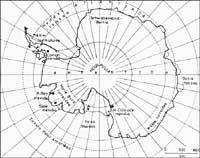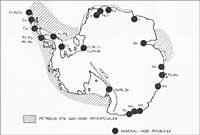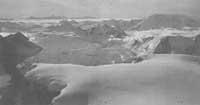Antarctica, the edge of the cold
1986/02/01 Barandiaran, Mariaje | Irazabalbeitia, Inaki - kimikaria eta zientzia-dibulgatzaileaElhuyar Fundazioa Iturria: Elhuyar aldizkaria
lines we will talk about this almost unknown continent covered with eternal ice. So far only the eyes of scientists and adventurers have attracted this hard and hard area. In the future, the aspirations of businessmen can also take place in this rough spot.
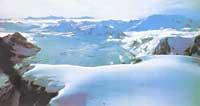
Open around the south pole, the Antarctica extends into a circle. Antarctica is the coldest, highest, driest, windy and most accessible of the seven terrestrial continents. Of its 14 million km2, 10% of the continental lands, almost 99% are covered with eternal ice. This ice represents 90% of land ice. The thickness of the ice shad is variable, at 4800 m of O, although the average thickness is not joking, 2450 m. Solid water is the most abundant natural resource on the continent!
Mountainous continent
Antarctica can be distinguished from a geological point of view in two major parts: West Antarctica and East Antarctica. Both have very different characteristics, so it is sometimes believed that they can be two continents separated by a marine arm.
The smaller West Antarctica is very mountainous, with several mountain ranges of 6000 m.
Eastern Antarctica is wider and covered by a high altitude plain. The average height of these plains is 2000 m and as they approach the South Pole the height is 3000 m. However, around the Ross Sea is the main mountain range of the Admiralty.
Cold and dry
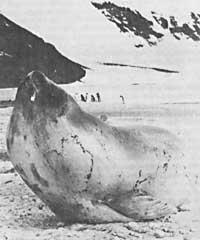
It can be thought that the climate of Antarctica is very special. Far from being very cold it is very dry. Even if it seems a lie, in this continent with 90% of the drinking water of the earth, it hardly rains, it is less than in most deserts of the world. In addition, this phenomenon is accentuated inside. Antarctica is a hard desert.
The snow that falls on the coast throughout the year reaches a height of 30-60 cm. Inside these numbers are even smaller, 15 cm of snow. That said more representative, those 15 cm of snow are 1, 27 cm of water, that is, 12 liters of water per square meter a year! News
This phenomenon of the scarcity of rain is easily explained if we take into account the cold environment in which we move. Winter temperatures range from -88 °C (indoor) to -60 °C (coastal). Although summer temperatures are somewhat warmer, they hardly pass the barrier of 0º C. While on the coast the average summer temperature remains around 0º C, inland is around -25ºC. However, in some areas, specifically in the northern temperate zones, the temperature in summer can be 15ºC.
Due to low temperatures, the atmosphere of the Upper Antarctica has a very low humidity: 10% of the existing humidity in nearby latitudes. Moreover, this humidity does not come from evaporation, etc., but from the southern oceans. Therefore, it is easy to understand why not rain with such low humidity.
In the initial part of this article it has been said that it is windy in giving the characteristics of Antarctica. Thus, wind is an inexorable factor in the Antarctic environment. The coasts of Antarctica are attacked by strong winds that soften as they enter the continent. In the station known as Mirny, during a winter, 185 km/h of wind were measured seven times, in addition to 60% of the drift. It was 60 km/h. They are certainly strong winds. The most severe climate factor that must endure expeditions that have traveled and circulate in Antarctica.
If still alive
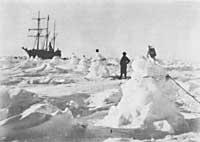
When we say that life is wonderful and a source of surprises, perhaps we will say great nonsense, because the example of Antarctica leads us to say that. [If the conditions for life on Earth are absolutely inadequate, it is Antarctica. Despite its scarcity, some animals and plants have colonized the South Pole itself. These plants and animals wait for the darkness and cold of winter to come summer, in an explosion, and for a short time to tour the mystery of life.
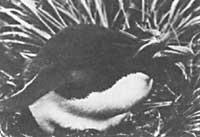
Antarctic plants are collected in about 800 species, most of them viscosities (350), fungi, algae and bacteria. Recently, some plants introduced by the guisazema have also begun to grow around the experimental seasons.
Terrestrial animals are scarcer than plants, all of them invertebrates. Among the invertebrates also predominates microfauna, such as nematodes and rotifers. The macrofauna consists of arthropods, most mites, which are parasites of marine mammals and birds.
Today, even though life in Antarctica is scarce as a result of the shad of ice, it was devoured in its day, according to the abundant deposits of coal. Fossilized ice trunks have been found in them. It seems that this ice situation began 50 million years ago.
Ozeno as a source of life
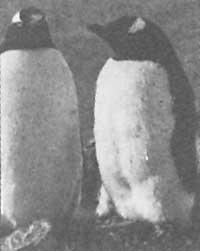
As we have mentioned, the remains of life in terrestrial Antarctica are poor, while in the seas around it are abundant.
The waters of Antarctica are full of phytoplankton, food of zoonplactona. Zooplankton is food for whales, fish, seabirds, seal, etc. which in turn inhabit this region.
In Antarctica, deep waters rich in nutrients emerge. Phytoplankton feeds on these nutrients, the first step in the trophic chain. However, the most important animal in the trophic chain is the so-called krill, like a saddle.
Krill is concentrated in very dense camps, with one billion units each. Krill is the staple food of whales and other animals. 150 whales per year. 000. They filter 000 tons of krill along their beards.
Seals are very abundant in Antarctica and their hunting was one of the factors that attracted man to these terrible and solitary places. At the beginning of this century, some seals, such as the Antarctic seal and the sea elephant, remained in danger of extinction. At present, the harsh and precise conservation measures that were adopted make this situation far away. Other seals that can be found are Ross Foka and Weddel Foka.
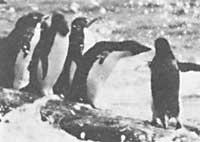
The Weddel seal is a wonderful animal. It is the mammal that lives farther south with the man. They are also able to live in Antarctica in the bluest winter. When the ice covers the water, they open the holes to breathe in the ice.
Other visitors to these cold waters are the whales. Once they were very abundant, but excessive hunting, unfortunately, has put some of them in danger of extinction
Among the birds, the penguin, symbol of Antarctica, is divided into numerous species in which 90% of the biomass is produced. Other birds are mainly albatross and countrymen. It should be noted that sometimes storm birds are found in the interior of Antarctica, although they normally live on the coast. All these birds feed mainly on fish and very abundant squids on the coast.
Underground wealth
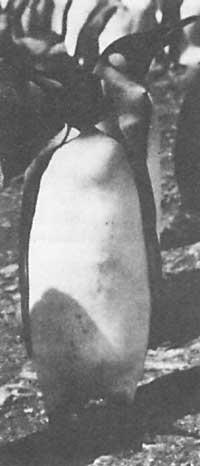
As the natural resources of accessible lands have declined, Antarctica has attracted the attention of businessmen as a new source of raw materials. Technicians from many villages have researched the areas of Antarctica in search of mineral deposits and fuel sources. The results seem to be quite generous (see map) and many believe that the commercial exploitation of Antarctica will not be a long time problem.
They say that coal is of very good quality, and a lot. On the other hand, it is estimated that approximately 20% of coal is on the surface, which would facilitate its profitable exploitation. Among metals, iron has the most promising forecasts, not forgetting zinc, lead and silver.
However, according to the technique, if at some point the exploitation of Antarctica begins, it will start from fossil fuels. Some forecasts indicate that under the Antarctic continental shelf there are 45 billion barrels of oil.
At the moment there is a kind of voluntary moratorium on the exploitation of the natural resources of Antarctica. The fact that good exploitation techniques are not fully prepared can have much to say in this non-exploitation. The techniques used in Alaska and Greenland, however, would be used in Antarctic conditions.
For many, before starting with the exploitation of the natural resources of Antarctica, an international agreement will be necessary. The agreement does not seem complicated as it will be difficult for El Dorado to become new.
Antarctica Exploration
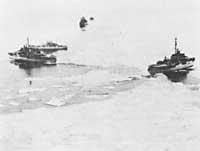
XVIII. At the end of the 20th century the civilized man had his first contact with Antarctica. The prestigious explorer and sailor James Cook crossed the Antarctic circle for the first time in 1773, while circumventing Antarctica. However, and if we have to attend to the majorities of New Zealand, this was not the first time he touched the man in the Antarctic. Around 1100, under the orders of the warrior Ni-te-Rangiera, a warrior headed south to find ice.
The next explorer was the Russian Fabian von Bellinshausen. In 1819-1821, going further south than Cook, he circumambulated Antarctica for the second time.
Subsequent discoveries are mainly due to whale hunters. Among them are Weddel, Biscoe, Kemp and Balleny.
XIX. At the end of the 20th century interest in Antarctica was revived. There were many expeditions at this time, with scientific interests apart from commercial interest. In addition, the race began to reach both before and the South Pole. The national and personal fame of reaching the Poles was much appreciated at that time.
Roald Amundsen, Norwegian and Scott, British, fought very nicely. On 14 December 1911 the Amundsen expedition arrived at the South Pole and returned to its base without further news. Scott arrived at the pole a month later and although he was not lucky when he first arrived at the pole, when he returned he had no more and his expedition died trapped by a storm.
Conquered the pole, the next milestone of the adventurers was to cross the continent. This was not achieved until 1957, when a tractor expedition in the International Geographic Year crossed Antarctica.
Antarctica TreatyOn 1 December 1959 the governments of the 12 countries signed the Antarctic Treaty. This treaty defines the current political-legal situation in Antarctica. It lasts thirty years and automatically collapses while one of the signatories does not request review. Twelve were the signatories: Argentina, Australia, Belgium, France, Chile, Japan, New Zealand, Norway, South Africa, Great Britain, the United States and the USSR. Other countries have joined the treaty below: Czechoslovakia, Poland, Denmark, Romania and the Netherlands. The achievement of the treaty was undoubtedly the result of unprecedented diplomacy. This allows a whole continent to be freed from non-political scientific research: The interest of all humanity for peaceful action forever is to turn the Antarctica into a place of conflict... The United Nations Charter Treaty must ensure the peaceful use of Antarctica... Article 1 of the Treaty establishes the peaceful use of Antarctica; Article 2, the freedom of international cooperation and scientific research; Article 3, the freedom of exchange of persons, of plans and of research results; Article 4, recognizes previous territorial requirements and dismisses subsequent ones; Article 5 prohibits the realization of nuclear explosions and the deposition of waste; Article 6, limits the scope of application of the treaty to the countries of XII 7. Article 30 establishes a duration of 30 years. |
Penguins
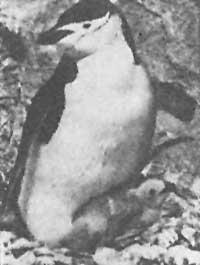
These birds are an Antarctica. From that icy and white desert of the south one cannot think without taking them to the head. Although penguins are similar to each other, not all are equal; classes are outside and we have kings.
Emperor Penguin: As its name suggests, it is the largest of all. It is placed in the middle of the winter month and takes it between the legs to give heat to the egg. The newborn penguin comes to the world with the explosion of spring zooplankton.
The closest relative of the emperor is usually the king, in this case the Royal penguin. It inhabits the bearded vultures and feeds on fish and squirrels. It is not very prolific, the child seems not to want much and has two children every three years.
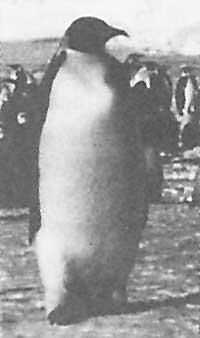
The most abundant penguin is the Adelia Penguin. This lives on large sides and feeds on Krill.
The disguised penguin is mainly concentrated in the herds of the Antarctic area, that is, in the herds of the South Atlantic.
The penguin Makarroi, whose name is parregi, is very abundant and lives on the coast.
Gentoo penguin, which feeds on Krill and fish, is not very abundant.

Gai honi buruzko eduki gehiago
Elhuyarrek garatutako teknologia



